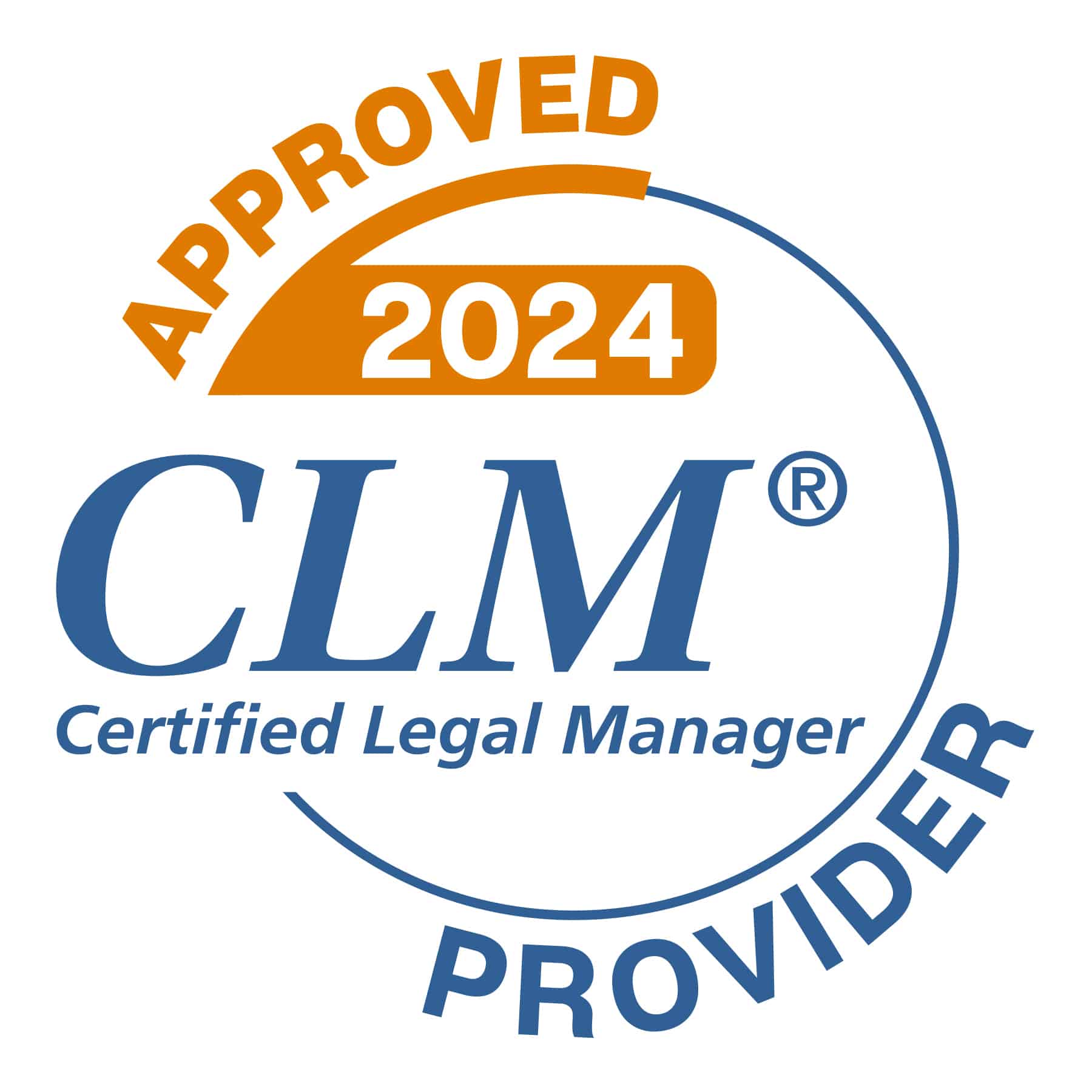
Common Issues & Solutions for Profitability
Law firm productivity is the key to the law firm’s profitability. Time tracking, invoicing and collections need to be systematized and automated for the financial health of the law firm. Once the data from those workflows is consistent, it can be measured, key learnings can be gleaned, and solutions can be implemented so that tasks take less time.
Once you understand the amount of time each lawyer tracks and for which tasks – and how timely the invoices are sent out, and how quickly the law firm is paid, you’ll be able to understand the profitability or lack of profitability of your firm. Data will show you where you may have inefficiencies.
How do law firms measure productivity?
Law firms need data to measure productivity and in turn, law firm profitability. Some metrics used to measure are:
- Client Intake
- Time Tracking
- Matter Activity
- Ready to Bill / Work in Progress
- Adjustments / Write Downs
- Receivables
- Collected Revenue
Common issues related to law firm productivity
Time tracking need not be time-consuming
Some lawyers still keep time on a yellow legal pad. Some don’t keep contemporaneous time at all. They recreate it a few days (or weeks) later. If you don’t keep time efficiently, it affects everything downstream: invoicing and collections — and your own income. Attorney compensation is important: to the attorney and to the firm. Understanding law firm productivity metrics — an essential part of law firm management — is the key to improving law firm profitability.
Getting your timekeepers into the habit of timekeeping is crucial. Look for legal technology that will give them a variety of options: calendar views, mobile apps, timers, bulk timing. If attorneys can easily access how they want to keep time, your time tracking will significantly increase in the law office.
What is a key factor that determines a firm’s profitability?
According to studies compiled by Ann Guinn for her ABA blog, in the legal industry, if you don’t get your time in by the end of the day, you’re likely to lose 10% of your billable hours. If you don’t get it in the next day, you’ll lose 25%. If you don’t get it in by the end of the week, you’ll lose a full 50%. You also won’t know how much your time is worth.
Billing Increment Chart: Cheat sheet for attorneys in 6 Minute Increments
It is essential to make time tracking as easy as possible for everyone in the law firm. This means anywhere, any time, any device timekeeping. Getting your timekeepers into this habit will increase profitability at the law firm.
Writedowns / adjustments
Tracking the productivity of a law firm timekeeper for a specific task is another key performance metric. A paralegal might take a long time for a certain task. When the client receives the invoice, he might not feel that the charge is justified. The client asks for an adjustment. Perhaps that paralegal is not suited for that task. You won’t know unless you have this time tracking data.
Make Sure Adjusted Time is Not Lost
Even if the law firm invoices a flat fee, the law firm administrator should understand how much time went into the client’s matter. Discounting fees or taking too much time on a task diminishes law firm profitability.
Law Firm Invoicing
If you don’t send out invoices in a timely manner, your client may be unclear about the work provided. The client might call you for clarity on the invoice and since this work was not done recently, you have to search the recesses of your memory to justify the work. You do not get paid for this time.
5 Easy Ways to Improve Accounts Receivable
A better approach would be for legal professionals to track time contemporaneously and send out invoices consistently. At the risk of stating the obvious: the faster you invoice, the faster you will be paid. Not just because they receive the invoice earlier, but because the value of the work will be fresh in the client’s mind. When administrative tasks are automated, they happen more quickly.
Electronic invoices
Less than a decade ago, most law firms’ billing systems were still sending out invoices via US Mail. Today, invoices can be sent electronically and paid for electronically. This speeds up the payment process considerably. Legal tech does not have to be complicated.
ACH Payments
Payments made from your client’s bank account to the law firm’s bank have much lower fees than credit cards. If you can create the accounts payable relationship with your new client at the outset via ACH, you will have saved yourself potentially thousands of dollars as well as increased cash flow for the law firm.
Credit Cards
Most law firms don’t want to pay credit card fees. The fees can be anywhere from 3% to 5%. But consider that law clients might be more likely to pay much more quickly if you make it as easy as possible for them to do so. Yes, you’re down 5%, but you don’t have to chase the client to pay you. How much do you save by not paying someone to manage a huge portfolio of accounts receivable? Automated payments — especially with the option to pay by credit card — make collection a breeze. When you establish a relationship with a new client, this is the time to set up the automation.
Trust Payments
The gold standard for Accounts Payable for law firms is to set up a retainer or IOLTA trust account for your client. Once you establish a continuous funding of the IOLTA account — which is separate from the law firm’s bank account — the law firm never has to spend energy on accounts receivable again.
Legal Trust Accounting in QuickBooks Online – The Easy Way and the Hard Way
An automated trust request can be sent out by the law firm to maintain the agreed upon level of the trust retainer. The trust retainer can also be paid electronically.
When an invoice is delivered, the client understands that the billed amount will be drawn from the trust account. A best practice would be to list the trust balance in the invoice so that the client understands where she stands with regard to the law firm payment. This is the most productive way to receive law firm payments.
Automated Reminders
Another way to improve law firm collections is to set up automated reminders to clients with outstanding invoices. Rather than paying a law firm administrator to take on this task, you can implement the automation as part of your invoicing workflow.
LeanLaw Offers Solutions for Law Firm Productivity
LeanLaw offers anywhere, anytime, any device time tracking software. In the office or on the go, you can enter time in a mobile app, calendar widget, through timers, bulk time entry or even straight into the matter. LeanLaw believes that if people enjoy the software and it’s easy to use, they will use it more often, developing a habit of time management.
Time is entered in seconds and pushed automatically to the invoice. There are no redundancies, copying time from one document to another. Everything is synced in real time: what one user sees is the same as what the managing partner at the law firm sees.
The law firm operator can routinely monitor productivity reports and look for trends in the client, practice area level and user level in order to understand where the law firm stands in the client / matter journey. At any given time, productivity reports can be viewed by clients and/or users highlighting billable, non-billable, and any write-down that went into an effort.
Law Firm Write Downs / Adjustments
LeanLaw has an Adjustments feature for when you want to adjust down a time entry on a specific invoice: the special sauce is that LeanLaw stores this data to calculate the difference between hours tracked and hours billed.
LeanLaw Return on Investment (ROI)
You can start to look at patterns. Are certain timekeepers having to write down a lot of time? Is it usually for the same task? You can make more informed decisions for your law practice, matching tasks to the appropriate attorneys, and eliminate bottlenecks or under-utilizing.
Writing down the time entry (but still keeping track of the original time entered) is exportable and printable to Excel sheets to use for further analysis. You can capture what was written down, and present the client with the adjusted amount. You can view this at the timekeeper level and the client level.
LeanLaw + Confido Legal Offer IOLTA Trust Account Solutions
Evergreen retainers help mitigate AR issues because you’re always keeping a certain balance in the trust account. Confido and LeanLaw overcome the internal objection that this is hard to manage, expensive, or confusing.
When the money you are owed is already in the trust account, it just takes a few clicks to be paid. And when you use LeanLaw, the client’s invoice can automatically show their trust balance so they always know where they stand with regard to their obligation to the law firm. When the trust account goes below a certain value, an automated request can be sent to the client.
Increase Accounts Receivable Realization by 20%
LeanLaw’s Confido Legal integration makes asking for retainers easy because you can set it up as an automated request when the trust balance dips to a certain level. You’ll have peace of mind, knowing that the client will receive a professional request and when the client makes the deposit, all of the accounting will be facilitated in a IOLTA compliant way.
Reducing overdue invoices with automatic reminders
In LeanLaw, you can set up automated reminders for invoices that have yet to be paid. When you stay on top of your accounts receivable, your clients will pay more promptly, and you will collect more money with LeanLaw. With one click, you can receive a report that shows you which invoices are outstanding. You can have an understanding of which clients pay their invoices in a timely manner. This understanding might reflect where you put your future resources when you take law firm profitability into account.
Collect more of your Law Firm AR with LeanLaw
Law Firm Productivity = Law Firm Profitability
Data doesn’t lie. When you start with measuring how attorneys track their time and keep consistent records all the way through billing and collections, you will get a clear picture of how your legal practice operates. Key performance indicators will reveal themselves and clarity will reign.
The data is drawn from actions that attorneys and staff members take as part of their workday. With automation, no one needs a to-do list or to take extra time to create and collate the data. LeanLaw collects and reports on the data in real time and with easy to use efficiency.
LeanLaw enables the law firm to get into the habit of recording their work so that the law firm administrator can understand what has historically been invisible or difficult to coalesce. LeanLaw legal software not only gives you the proper workflow, but also the added solution of gaining transparency into the law firm’s productivity and thus, profitability. They have always been interconnected but now, LeanLaw gives you the ability to access the data with just a few clicks.



